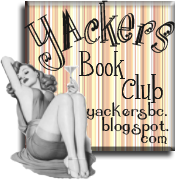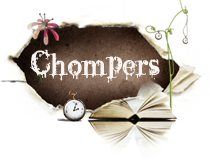I had the pleasure of getting to read Jonathan Maberry's latest, DEAD OF NIGHT, and I have to say, it's pretty freaking awesome. This man writes zombies with such finesse that you'd think they were ballerinas. Dead ballerinas but ballerinas nonetheless. Of course I jumped at the opportunity to do my part in the DEAD OF NIGHT blog tour because, well, awesome. So here is where I turn it over to Jonathan so he can wax poetic about the state of the zombie.
Zombies have been with us in one form or another for decades (if you go by the Romero calendar), or centuries (if you’re a Voodoo purist), or even millennia (of you track it back to the first mention of the dead eating the living in the Epic of Gilgamesh, circa 18t century BC). They’re part of our culture and they’re here to stay.
But something has changed. Zombies are no longer niche market monsters that play to the gore crowd. They’re no longer the monsters you have to stop and explain to people. They’re no longer the get-no-respect also-rans in the world of the mysterious dead.
Zombies have come into their own.
It’s been a long time coming, but it’s happened.
The process started with Romero, sure. (And, yes, we all know that Uncle George did not call them zombies, but the name has stuck, so let’s move on.) Romero made the living dead flesh-eating ghoul into a cinematic phenomenon. There really hadn’t been much like it in film before Night of the Living Dead, but since then this monster has been imitated to one degree or another so many times that it has become its own unique trope. The zombie exists, and it is currently second only to vampires as a money-making monster. In 2012, financial reporters estimated that the zombie pop culture was a $5-billion dollar industry. We’re talking movies, TV shows, games, books, comics, toys, clothes, apps, and more. That figure doesn’t even touch the moneymaking machine that is advertising, where zombies have been used to sell everything from cars to clothing to sporting goods.

It’s refreshing to no longer have to tell my pop culture-impaired friends what a zombie is. Yeah, sure I still have to explain some of the back-story, and name some of the key players, but if you throw out the word ‘zombie’, people have a sense of what you’re talking about.
What most people don’t know is that there are some watershed moments in the development of the zombie trope, and not all of them had to do with Romero’s flicks.
One of the most significant turning points was the publication of Book of the Dead, an anthology of original stories released in 1989 and edited by John Skipp and Craig Spector. The stories were all set in circumstances closely approximating those of NOTLD, and it debuted less than a year after the release of DAWN OF THE DEAD. Three things about that anthology were landmark. The first thing is…that it was the first thing; the first anthology of zombie literature. Prior to this, there had been a few books –namely the novelizations of Night of the Living Dead and Dawn of the Dead, and John Russo’s ‘sequel’ to Night called Return of the Living Dead –which was no relation in story or structure to the Dan O’Bannon film of the same name. The second incredible thing was the line-up of writers. These days you almost always see a few heavy hitters in an anthology line-up, but never for a book like this. But Skipp and Specter snagged Stephen King, Richard Laymon, Ramsey Campbell, Douglas E. Winter, Robert R. McCammon, Joe Lansdale, David Schow and a whole bunch more. The absolute A-list of that era's horror writers. And the third thing? The anthology was frigging amazing. Every single one of them.
Nor was this a fluke. Skipp and Specter scored again with Still Dead: Book of the Dead 2, with headliners Dan Simmons, Gahan Wilson, Poppy Z. Brite, Nancy Holder, K. W. Jeter, and others.
What's the upshot? Zombie fiction had suddenly 'arrived'. Or, maybe 'materialized' is a better word. With those books, Skipp and Specter proved that zombie fiction was viable, that it was commercial, that it was acceptable and that it was literature. Yeah, I used the ‘l’ word. Literature.
Without those books, it’s highly doubtful that we would have a shelf-full of zombie fiction today. Max Brooks would probably never have written World War Z, nor would Brian Keene have written The Rising. Not to mention the works of Joe McKinney, Carrie Ryan, Mira Grant, David Wellington, and others. And…me. I would be writing spooky stuff, sure, but I wouldn’t be writing about zombies. Not without the Book of the Dead.
There are a number of other landmark moments that, to one degree or another, have either fueled the fire of zombie enthusiasm, expanded the scope of the genre, or made the genre accessible to new audiences. Here are a few, and I invite you to comment with additions to my ‘Key Moments in Modern Zombie History List’. My list is by no means complete.
The Crazies (1971) –George Romero’s often ignored and overlooked classic that created the model for all outbreak flicks. This is the grandfather of flicks like 28 Days Later. The remake was pretty darn good, too.
Return of the Living Dead (1985) –Dan O’Bannon’s unofficial and highly irreverent sort-of sequel to Night of the Living Dead. Subversive and hilarious. The first time we had fast zombies, by the way.
Resident Evil –the first major zombie-themed video game, and one of the first ‘survival horror’ games, which has since become a staple of the industry. The thing about Resident Evil was –not only was it fun to play, it was actually scary. The movies that followed strayed from the storyline quite a lot, but they also invited in a massive new audience. And, hey, Mila Jovovich.
The Rising by Brian Keene. A supernatural, nihilistic, downbeat and uber-violent story about the total destruction of humankind. Brian Keene brought his considerable A-game to this project and established himself as the King of the Living Dead, a title he continued to earn with subsequent books. This was one of the very first zombie bestsellers, and it’s largely responsible for kicking of the modern era of zombie fiction. Thanks, Brian. We all owe you a drink.
The Zombie Survival Guide by Max Brooks. The million-copy bestseller that remains as the top-selling zombie nonfiction book of all time. Funny, but actually pretty damn useful and very smart. Go Max.
World War Z by Max Brooks. Get this: a hardcover, mainstream novel about a zombie war, told entirely from the point of view of an historian collection personal accounts from something that ended years ago? And it’s a massive indictment of political game-playing. There is no way this should have worked, and yet it was a hardcover bestseller for over a year, and still hits the bestseller lists in trade and mass market paperback. The audience? The mainstream. Yeah. Wow.
Monster Island by David Wellington: The first of a trilogy of novels that gave zombies a new political spin, a supernatural twist, and the elegance of literary-quality writing.
Marvel Zombies (comic book) –Robert Kirkman brought the living dead to a massive new audience by turning Marvel heroes into flesh-eating ghouls. Introduced first in Marvel’s ‘Ultimates’ alt-verse, then intruding into our universe. I was delighted to play in this sandbox with MARVEL ZOMBIES RETURN.
The Walking Dead (comic book). Come on…really? We need to even discuss how important the ongoing comic and American TVs best horror show in…like…ever?
Shaun of the Dead: The best RomZomCom ever made. Endlessly watchable, always hilarious, and it succeeds while always respecting the source material. That isn’t easy. (Okay, so let’s all meet at the Winchester).
28 Days Later –Danny Boyle’s yeah-they’re-not-zombies-they’re-only-infected-humans pandemic masterpiece did an insane amount of good for the zombie genre. I know there have been fights over whether they’re zombies or not. Who friggin’ cares? If it looks like a duck, and quacks like a duck…
Dawn of the Dead (remake): Zack Snyder scored a letter-perfect flick that took the best elements of Romero (the outbreak, the bonding/collision of disparate characters in a confined space, etc.) and amped it up by giving us fast zombies and a killer soundtrack. This is an example of what happens when high production values are assigned to a genre too many people in Hollywood considered to be ‘throwaway’.
Zombieland: the 2009 action-horror-comedy was a massive hit and is currently the top-grossing zombie flick to date.
So…that rolls us up to today. What’s the state of the zombie? It’s healthier than ever. The Walking Dead kicks ass on TV, and the comic is as strong as ever. Brad Pitt is making (a statement that always feels like a punch-line, but isn’t.) Zombies have invaded the young Adult fiction world with best-sellers like Carrie Ryan’s Forest of Hands and Teeth and its sequels; Cherie Priest’s brilliant steampunk fantasy, Boneshaker; my own Rot & Ruin series; and many others. You see zombies in TV ads almost every day. Zombie toys are everywhere. And thousands of people gather for zombie walks or zombie crawls in cities around the world.
The state of the zombie? Yeah, the meat is very fresh and we’re all hungry for another bite.
**********
Jonathan Maberry is a New York Times bestseller and multiple Bram Stoker Award-winning author, editor and Marvel Comics writer. He has written pre-apocalypse novels: Ghost Road Blues, Dead Man’s Song, Bad Moon Rising, Patient Zero, and The Dragon Factory; an apocalypse novel, Dead Man’s Song; apocalypse comics: Marvel Universe vs the Punisher and Marvel Universe vs Wolverine; and post-apocalyptic novel, Rot & Ruin, Dust & Decay, and Flesh & Bone. He hasn’t tackled Dystopian fiction yet…but you can pretty much assume he will. Find him online at www.jonathanmaberry.com and on Twitter, Facebook and GoodReads.

Click here to read bonus content from Jonathan's DEAD OF NIGHT! You won't regret it! Well, except maybe in the sleep department.










